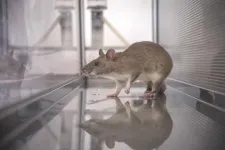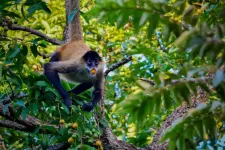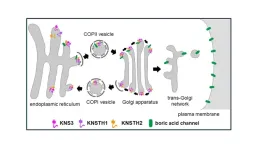(Press-News.org) "Sustainable development pathways are strategies that prevent dangerous climate change while at the same time moving towards a world that allows people to prosper on a healthy planet,” explains Bjoern Soergel, scientist at the Potsdam Institute for Climate Impact Research PIK and lead author of the study published in Environmental Research Letters. This is the essence of the 17 SDGs agreed by the United Nations in 2015. “Our analysis shows that all three sustainable development pathways are far more effective than our current ‘business as usual’. They drive substantial progress towards the SDGs, for example reducing the number of people in extreme poverty by two thirds until 2030 and to virtually zero in 2050. They also curb global warming and avert further degradation of the environment. Importantly, they also avoid the unintended side effects of simplistic climate protection strategies, such as relying heavily on bioenergy or carbon capture and storage without taking into account potential conflicts with food production or public acceptance.”
Three powerful ways to accelerate sustainable development
In the study, the scientists look at three possible pathways to achieve the 17 sustainable development goals used by governments, companies, and NGOs worldwide to guide action towards a sustainable and just future. The study is the first to systematically compare such different sustainable development pathways, analysing results from four models: two integrated assessment models of the global energy, economy, land and climate system and two models focused on the global buildings and materials sectors, respectively.
“All scenarios we looked into share the same set of goals, but the question is how to get there,” explains Isabelle Weindl, PIK scientist and co-author of the study. She points out that all the pathways examined in the study stand out in their own way. “For example, the sustainable lifestyle pathway includes a rapid shift towards a flexitarian, largely plant-based nutrition, which is known to also have substantial benefits for human health.” This pathway would further include a reduction of global final energy use per capita of around 40% by 2050, with wealthier countries contributing the largest share to decrease energy inequality. Such changes might pose challenges in terms of how realistic they are for people to adopt, the researchers point out. However, they would also come with large benefits, as Soergel adds: “The sustainable lifestyle pathway has the lowest reliance on unproven technologies and the most positive outcomes for biodiversity and climate protection.”
The other pathways foresee a more gradual change in diets and energy consumption, but assume more rapid innovation in green technologies or greater orchestration of system-wide changes by governments, which each comes with their own challenges. “Even though the pathways differ in what they emphasize, they all can deliver”, says Elmar Kriegler, Head of the research department Transformation Pathways at PIK and co-author of the study. “This is important because the path to sustainable development is often narrowed to individual worldviews, making it more difficult to find common ground to embark on this journey. ” He concludes: “If we stick to our current trajectory, none of the SDGs will be achieved. By 2030, 660 million people could still be living in extreme poverty, and environmental crises like biodiversity loss and global warming will only get worse. So it is clear we must act now. We can still choose which sustainable path to pursue, but ignoring them is no longer an option.”
The publication is accompanied by an interactive web tool for exploration, visualization and download of the scenario data: https://shape.apps.ece.iiasa.ac.at/
Article: Bjoern Soergel, Sebastian Rauner, Vassilis Daioglou, Isabelle Weindl, Alessio Mastrucci, Fabio Carrer, Jarmo Kikstra, Geanderson Ambrósio, Ana Paula Dutra Aguiar, Lavinia Baumstark, Benjamin Leon Bodirsky, Astrid Bos, Jan Philipp Dietrich, Alois Dirnaichner, Jonathan C Doelman, Robin Hasse, Ariel Hernandez, Johanna Hoppe, Florian Humpenöder, Gabriela Ileana Iacobut, Dorothee Keppler, Johannes Koch, Gunnar Luderer, Hermann Lotze-Campen, Michaja Pehl, Miguel Poblete-Cazenave, Alexander Popp, Merle Remy, Willem-Jan van Zeist, Sarah Cornell, Ines Dombrowsky, Edgar G Hertwich, Falk Schmidt, Bas van Ruijven, Detlef van Vuuren, and Elmar Kriegler (2024): Global burned area increasingly explained by climate change. Environmental Research Letters. [DOI: 10.1088/1748-9326/ad80af]
END
Three pathways to achieve global climate and sustainable development goals
2024-10-30
ELSE PRESS RELEASES FROM THIS DATE:
Giant rats could soon fight illegal wildlife trade by sniffing out elephant tusk and rhino horn
2024-10-30
In the past, African giant pouched rats have learned to detect explosives and the tuberculosis-causing pathogen. Now, a team of researchers have trained these rats to pick up the scent of pangolin scales, elephant ivory, rhino horn, and African blackwood. These animals and plants are listed as threatened and at high danger of extinction.
“Our study shows that we can train African giant pouched rats to detect illegally trafficked wildlife, even when it has been concealed among other substances,” ...
Spin current observations from organic semiconductor side
2024-10-30
Electrons spin even without an electric charge and this motion in condensed matter constitutes spin current, which is attracting a great deal of attention for next-generation technology such as memory devices. An Osaka Metropolitan University-led research group has been able to gain further insight into this important topic in the field of spintronics.
To investigate the characteristics of spin currents, OMU Graduate School of Science Professor Katsuichi Kanemoto’s group designed a multilayer device consisting of a ferromagnetic layer and an organic semiconductor ...
Alcohol consumption among non-human animals may not be as rare as previously thought, say ecologists
2024-10-30
Anecdotes abound of wildlife behaving “drunk” after eating fermented fruits, but despite this, nonhuman consumption of ethanol has been assumed to be rare and accidental. Ecologists challenge this assumption in a review publishing October 30 in the Cell Press journal Trends in Ecology & Evolution. They argue that since ethanol is naturally present in nearly every ecosystem, it is likely consumed on a regular basis by most fruit- and nectar-eating animals.
“We're moving away from this anthropocentric view that ethanol is just something ...
Survey: Dangerous gap in knowledge about pancreatic cancer among adults under age 50
2024-10-30
While pancreatic cancer rates are rising in people under age 50, a new survey conducted by The Ohio State University Comprehensive Cancer Center – Arthur G. James Cancer Hospital and Richard J. Solove Research Institute (OSUCCC – James) shows most people continue to believe that pancreatic disease affects only the elderly – and that there is nothing they can do to reduce their risk.
For this survey, respondents were asked about risk factors for pancreatic cancer. More than half (53%) of adults under age 50 said they would not recognize the early signs or symptoms of the disease, and more than one third (37%) believe there is ...
Women entering menopause later in life at greater risk for asthma
2024-10-30
CLEVELAND, Ohio (Oct. 30, 2024)—Many studies suggest that an earlier age at menopause is more detrimental to a woman’s health, leading to an increased risk for adverse health conditions such as heart disease, diabetes, osteoporosis, and depression, among others. However, a new study is linking a later age at natural menopause with a greater risk for asthma. Results of the study are published online today in Menopause, the journal of The Menopause Society.
Asthma is a common, chronic disease affecting more than 300 million people worldwide. The prevalence of asthma ...
Sinuses prevented prehistoric croc relatives from deep diving
2024-10-30
EMBARGOED: NOT FOR RELEASE UNTIL 00.05 (UK TIME) WEDNESDAY 30 OCTOBER 2024
An international team of paleobiologists have found that the sinuses of ocean dwelling relatives of modern-day crocodiles prevented them from evolving into deep divers like whales and dolphins.
A new paper published today [30 October] in Royal Society Open Science suggests that thalattosuchians, which lived at the time of the dinosaurs, were stopped from exploring the deep due to their large snout sinuses.
Whales and dolphins (cetaceans) ...
Spirited away: Key protein aids transport within plant cells
2024-10-30
Botanists have come to understand the channels and transporters involved in the uptake and transport of nutrients, yet how are they positioned where they need to be?
For example, plants need boron, which is taken into the cells by molecules known as the boric acid channel. But how do the proteins that form the channel make it to the plasma membrane?
A research group led by Professor Junpei Takano of Osaka Metropolitan University’s Graduate School of Agriculture identified a mutant line of Arabidopsis thaliana in which the boric acid channels are not properly transported to the plasma membrane. The cause was a deficiency in the protein KAONASHI3 (KNS3); the name ...
Britain’s brass bands older than we thought and invented by soldiers from the Napoleonic Wars, new study reveals
2024-10-30
University of Cambridge media release
Britain’s brass bands older than we thought and invented by soldiers from the Napoleonic Wars, new study reveals
UNDER STRICT EMBARGO UNTIL 00:01 AM (UK TIME) ON WEDNESDAY 30TH OCTOBER 2024
Military musicians returning from the Napoleonic wars established Britain’s first brass bands earlier than previously thought, new research reveals. The study undermines the idea that brass bands were a civilian and exclusively northern creation.
It is widely believed that brass bands originated with coal miners and other industrial communities ...
The Lancet: Health threats of climate change reach record-breaking levels, as experts call for trillions of dollars spent on fossil fuels to be redirected towards protecting people’s health, lives and
2024-10-30
The Lancet: Health threats of climate change reach record-breaking levels, as experts call for trillions of dollars spent on fossil fuels to be redirected towards protecting people’s health, lives and livelihoods
New global findings in the 8th annual indicator report of the Lancet Countdown on Health and Climate Change reveal that people in every country face record-breaking threats to health and survival from the rapidly changing climate, with 10 of 15 indicators tracking health threats reaching ...
‘Weekend warrior’ exercise pattern may equal more frequent sessions for lowering cognitive decline risk
2024-10-29
Just one or two sessions of physical activity at the weekend—a pattern of exercise dubbed ‘weekend warrior’---may be just as likely to lower the risk of cognitive decline, which can often precede dementia, as more frequent sessions, concludes research published online in the British Journal of Sports Medicine.
And it may be more convenient and achievable for busy people as well, suggest the researchers.
It’s important to identify potentially modifiable risk factors for dementia because a 5-year delay in onset might halve its prevalence, they say, adding that nearly all the evidence to date comes from studies ...



